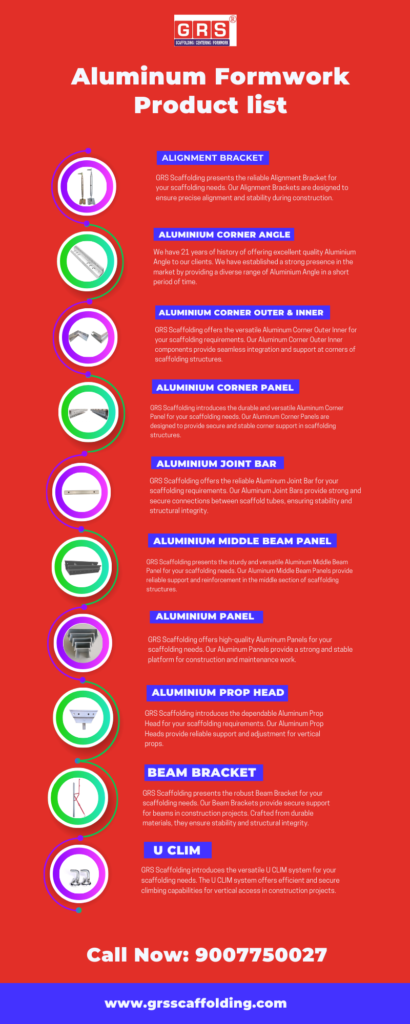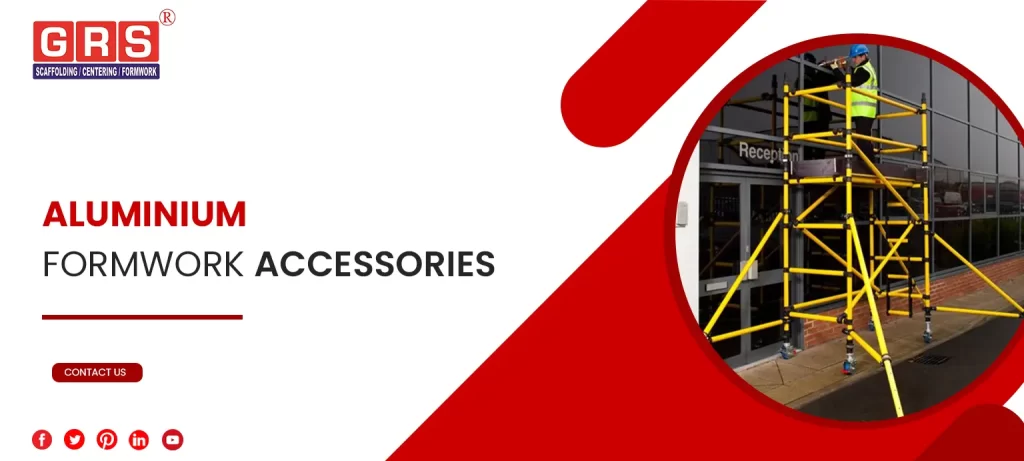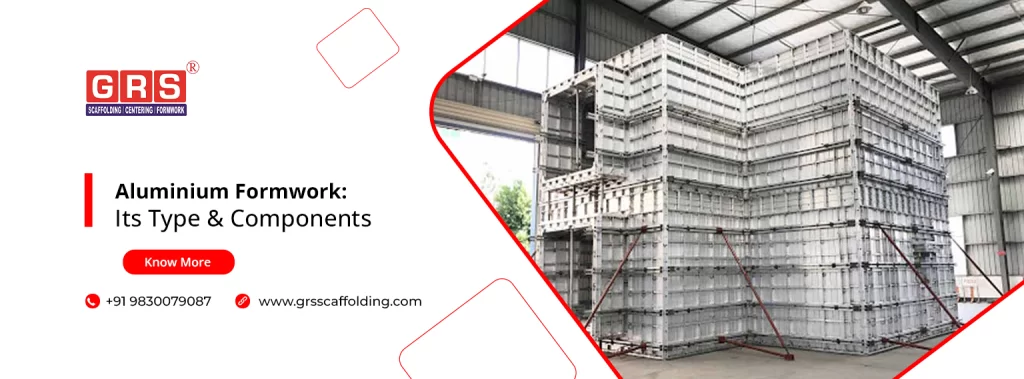In the ever-evolving landscape of construction technology, aluminum formwork stands out as a groundbreaking solution, transforming the way buildings rise against the skyline.
This lightweight yet robust alternative to traditional formwork materials like wood and steel is gaining traction for its remarkable benefits, from accelerating project timelines to ensuring a superior finish.
However, like any innovative tool, it comes with its own set of challenges.
In this detailed exploration, we will delve into the multifaceted advantages and potential drawbacks of aluminum formwork, offering a balanced perspective that could redefine your next construction project.
Whether you’re a seasoned contractor or a budding architect, understanding these nuances could be crucial in steering your project decisions towards efficiency and excellence. Join us as we unpack the complex yet captivating world of aluminum formwork, a material that promises to shape the future of construction.
What Is Aluminum Formwork?
Aluminum formwork is a revolutionary construction system that streamlines the process of building concrete structures. Made primarily from high-strength aluminum alloys, this type of formwork is celebrated for its efficiency and effectiveness in forming a mold for wet concrete, which then hardens into structural components like walls and floors.
What sets aluminum formwork apart is its remarkable ability to be easily assembled and disassembled, offering a reusable solution that not only speeds up construction but also minimizes waste. Its precision-engineered panels and modules can be adjusted to fit various architectural layouts, allowing seamless adaptability from simple residential buildings to complex commercial structures.
Embracing aluminum formwork means embracing a future where construction is quicker, cleaner, and more cost-effective.

Advantages and Disadvantages of Aluminium Formwork:
Discover the pros and cons of Aluminum Formwork: Quick assembly & reusability vs. higher upfront costs & limited adaptability. Let’s weigh the options!
Certainly! Here’s a table format outlining the advantages and disadvantages of aluminum formwork:
| Advantages of Aluminum Formwork | Disadvantages of Aluminum Formwork |
|---|---|
| Lightweight, facilitating handling and transportation | Higher initial costs compared to traditional materials |
| High reusability, reducing waste and costs | Complex repair and modification processes |
| Speeds up construction timelines with quick assembly | Limited adaptability to complex architectural designs |
| Provides precise finish, reducing the need for further plastering | Thermal conductivity may affect concrete curing |
| Environmentally friendly, with reduced waste and recyclable material | Requires skilled labor for optimal utilization |
| Offers safety features with reduced risks during handling | Availability may be limited compared to other materials |
Advantages of Aluminium Formwork:
A. Lightweight Nature:
- – Easier handling and transportation.
- – Reduced need for heavy machinery on site.
B. High Reusability
- – Long lifespan due to material durability.
- – Economic benefits from multiple uses.
C. Speed of Construction
- – Faster assembly and disassembly.
- – Shortens project timelines significantly.
D. Accuracy and Quality
- – Provides a smooth finish, reducing the need for further plastering.
- – Consistency in quality across different projects.
E. Environmentally Friendly
- – Reduced waste through reuse.
- – Recyclable material at the end of its lifecycle.
F. Safety Features
- – Reduced risks during handling due to lighter weight.
- – Stability in the construction process.
Disadvantages of Aluminium Formwork
A. Initial Cost
- – Higher upfront costs compared to traditional formwork materials.
B. Handling and Repair
- – Requires careful handling to avoid damage.
- – More complex to repair if damaged.
C. Adaptability Issues
- – Less adaptable to complex architectural features.
- – Difficulties in modifications and adjustments on site.
D. Thermal Conductivity
- – Potential issues with heat transfer affecting concrete curing.
E. Skill Requirement
- – Need for skilled labor to optimize the benefits of aluminum formwork.
F. Availability
- – Possible issues with sourcing and availability compared to more common materials.
What is Aluminium Form material?
Aluminum form material is a cutting-edge construction solution crafted from high-strength aluminum alloys. It serves as a mold for wet concrete, shaping it into walls, floors, and other structural elements.
Renowned for its lightweight yet durable properties, aluminum formwork offers easy assembly, precise finishes, and environmental benefits through its reusability. Embrace the future of construction with aluminum form material, where efficiency meets sustainability.
What Is Aluminum Formwork System:
The aluminum formwork system revolutionizes construction with its lightweight, reusable panels and precise engineering. By streamlining the process of molding concrete, it accelerates project timelines while ensuring a high-quality finish.
Its adaptability to various architectural designs makes it a versatile choice for a wide range of construction projects. With aluminum formwork, builders can achieve efficiency, durability, and sustainability, ushering in a new era of construction excellence.

Aluminium Formwork Product List:
The Aluminium Formwork Product List encompasses a comprehensive array of cutting-edge construction materials tailored to meet the demands of modern building projects. Engineered with precision and durability in mind, this product line features a diverse range of formwork components, including panels, beams, props, and accessories, all crafted from high-quality aluminium alloys.
These formwork elements are designed to facilitate swift assembly and disassembly, optimizing efficiency in construction processes. The product list also includes specialized formwork solutions for various structural configurations, ensuring versatility in accommodating different architectural designs.
With a commitment to sustainability, these aluminium formwork products not only enhance construction speed but also contribute to reduced material waste and increased reusability, making them an eco-friendly choice for contemporary construction projects.
Whether for residential, commercial, or industrial applications, the Aluminium Formwork Product List stands as a testament to innovation and excellence in modern construction methodologies.

FAQ Related Aluminium Formwork
Aluminum formwork is less durable, stiff, and powerful compare to steel formwork. Also compared to aluminium formwork, Steel formwork is less likely to distort and easier to modify to the needs of a specific project. If steel formwork needs to be changed, securing components in place to connectors with a hammer is usually a simple task.
An aluminium formwork is a temporary structure of aluminium in construction industry for constructing a building structure such as walls, floors, beams, and staircases. It’s also a scheduling and control system for other construction trades including steel reinforcing, concrete installation, and mechanical and electrical conduits.
The load bearing capacity of aluminium formwork is depending upon the quality of formwork material used and it is very between 50 to 60 Kn/M2.
Aluminium formwork are Light in weight so it is easy to handle very precise, and very sturdy. It has a low average use-cost and can be used multiple times in a construction work. Integral extrusion forming is used in this formwork technology, which is very cost effective. Convenient and effective construction of this sort of formwork.
The life span of Alauminium formwork is determined by how it is used and maintained, as seen in the excerpt below. It is a relatively new technique that saves money, time, and enhances building quality.



